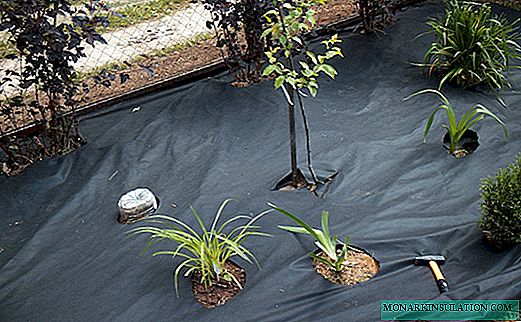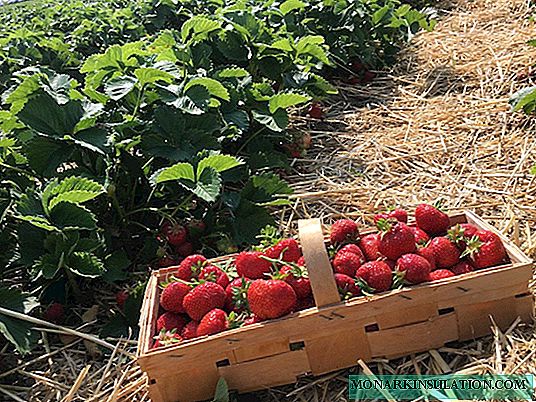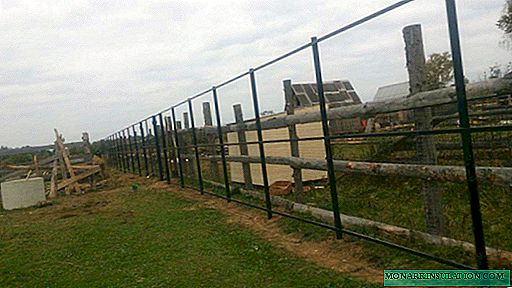
When planning the construction of a fence on the site, each owner wants to get a reliable, durable and at the same time aesthetically designed fence that will protect his possessions from the prying eyes and "uninvited" guests. Fence on screw piles is the optimal solution for the construction of a solid fence, the construction of which does not require large financial investments. Screw piles, which have become widespread in recent decades in suburban construction, make it possible to build a reliable support even in the conditions of floating "unstable" soils.
What is the advantage of pile construction?
They are widely used in construction due to a number of undeniable advantages:
- Possibility of installation in the conditions of "difficult soil". Fence on screw piles can be erected not only on peatlands and loams, but also on any soils with a high level of groundwater occurrence. Piles can be mounted even in marshy areas, on heterogeneous reliefs and slopes with a large difference in elevation.
- Construction in any season. Screw piles are easy to install in all weather conditions. No wonder they are actively used in construction even in permafrost.
- Ease of construction. Screw piles for the fence are metal pipes with welded or cast tips, which, like screws, simply screw into the ground. Screws can be screwed into the ground manually without involving construction equipment.
- Installation speed. It takes no more than 20-30 minutes to screw one pile. You can build reliable posts on a screw base in just a couple of days.
- Long service life. Screw piles can regularly last about 50 years. If, before installation, they are additionally treated with an anti-corrosion compound, then such products will last more than a hundred years.
Screw piles for fences are one of the most economical options for arranging a reliable support. Compared with the same strip or column foundation, the cost of a screw base is 40-50% cheaper.
In addition, piles can be reused. This makes it possible at any time to dismantle the support and install it at any other place on the site.

Screw piles - a universal type of foundation, which can be laid both under fences in private household territories and under heavy multi-storey buildings for housing and industrial facilities
We select the appropriate option for piles
The bearing capacity of piles depends on the diameter of the pipe. To erect a fence on piles with your own hands, it is enough to use pipes with a diameter of 54-108 mm, which have a wall thickness of 2-8 mm. Pipes with a diameter of 54 mm are designed for the construction of a wooden fence, as well as light fences made of plastic or metal mesh.
Piles d = 89 mm are able to withstand the load created by metal fences or fencing from corrugated board. The load characteristics of piles d = 108 mm are quite high: they can withstand not only lightweight fences, but also greenhouses, terraces, arbors and other elements of landscape design.
For a more accurate determination of the length of the product, it is necessary to perform a preliminary screwing. The depth of immersion of the soil pipe depends on the composition of the soil: it can be deepened by 1 meter or 5 meters. On average, piles are screwed to a depth of 1.5 meters.

It is convenient to use screw piles because they do not violate the landscape drawing of the area, since the soil layers pass “pointwise”
The most important thing to mention in this paragraph is that on sale you can find special piles for fences that already have holes for mounting spans of the fence.
Basic rules for installing a “screw” fence
Before erecting the fence on piles, a test screwing should be carried out, thanks to which you can determine the limit of the deepening of the structure and the quality of the soil itself. The rules for laying the foundation below the level of soil freezing should be strictly adhered to, erecting a fence on moisture-saturated soils.
This is necessary so that, as a result of seasonal fluctuations of the soil and under the influence of frost heaving forces, the support during operation is not pushed to the surface, but is firmly fixed in the soil layers.
Screw piles, like other supporting structures for the fence, are installed at a distance of 2.5-3 meters. Having decided on the place of erection of the fence and calculating the required number of support poles, you can proceed with the breakdown of indicative pegs, on the site of which piles will be built in the future.
Piles can be screwed both manually and with the use of small-scale mechanization. It is most convenient to screw the piles not alone, but with two assistants.

Significantly facilitate the installation process will help the use of a lever, which can be made from a metal rod
To create a lever at the upper end of the pile, in which there are technological holes, a conventional reinforcement d = 3 cm is inserted. Pieces of a square pipe are put on both sides of the reinforcement, which will subsequently act as a lever. The optimal length of the "sleeves" of the lever is about three meters.
To simplify the work of erecting a screw base manually, you can use a special two-handed collar with a clip that looks like a pipe wrench. Using this tool it will also be convenient to control the verticality of screwing the pipe.

Piles must be screwed into the soil at a right angle, strictly maintaining their verticality and location in plan

If you want to save time and you do not mind the material means for this - feel free to hire professionals. Special equipment will help with large volumes and limited time frames.
There are also special machines for screwing piles, with which you can control the verticality of the structure relative to its axis. Vertical immersion is necessary so that as the screw goes deeper, the inter-blade space is compacted, and the building structure acquires strength and stability.

After installing the piles, you need to trim to the desired level. It is easier to control the height and horizontalness of the aerial parts of piles using a level or hydraulic level
If you are making a heavy fence, it is better to seal the place where the piles come out of the ground with a special M-150 solution. Sealing will protect the inside of the structure from moisture and increase its bearing capacity. And surface treatment of the above-ground outer part of the pile with a two-component primer and anti-corrosion composition will extend the life of the product in any case, whatever fence you make.
Sometimes the option “twisted the pile - inserted a pillar into it” is possible. This option also has the right to life, it has proven itself very well.
After all the piles are screwed in, the crossbars on which the fencing elements are attached are mounted to the posts using self-tapping screws or dowels for metal. When arranging fencing from a chain-link, you can attach the grid using ordinary soft wire or metal clamps. To prevent the grid from sagging, a tightly stretched wire or rod must be drawn through one of the upper rows of cells.
That's all. A fence on screw piles will serve as reliable protection of the site, not inferior in strength to other types of fences.











